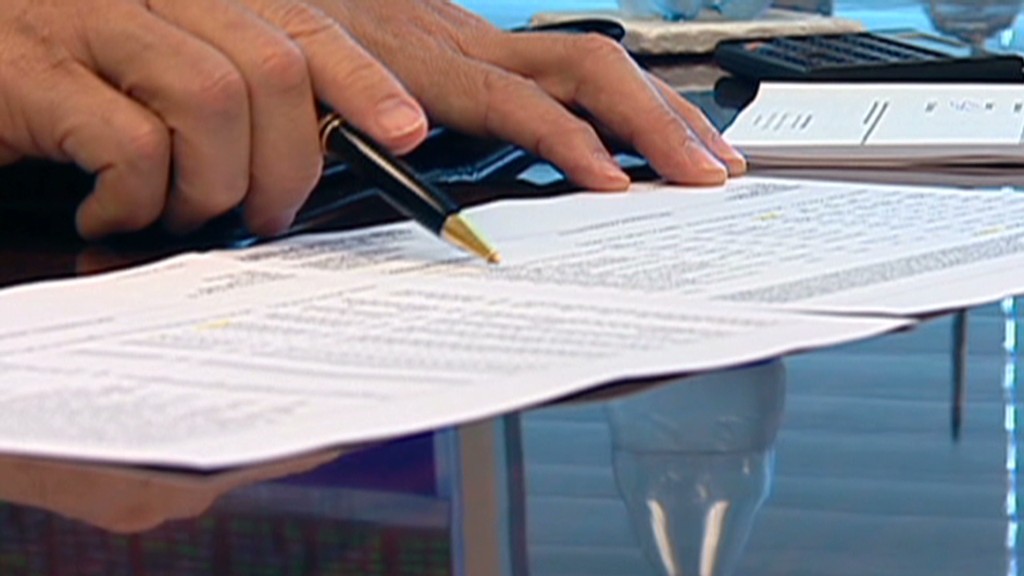
Some U.S. workers are losing out on more than $100,000 in retirement savings thanks to 401(k) fees.
The company an employee works for makes all the difference. Over the course of a 40-year career, workers at some companies lose tens of thousands of dollars in 401(k) fees and earnings -- sometimes more than double the savings lost by workers at other firms, according to an exclusive analysis of about 2,300 company 401(k) plans by FutureAdvisor, an online financial adviser.
Each year, 401(k) savers pay a percentage of their account balance toward administrative and investment-management fees, which are usually included in the calculation of fund expense ratios. As an individual's account balance grows, so do the fees they pay.
When a retirement saver is just starting out, they usually pay less than $100 in fees a year since their balance is low, according to FutureAdvisor. But when the account balance reaches $50,000, annual fees more than triple to about an average of $355. And by the time a person is ready to retire, the fees can add up to several thousand dollars a year.
And some employees may face additional costs, including trading fees and operating fees to help the company pay for the plan.
In addition to all of these fees are the earnings savers could have realized had they not been paying so much.
Related: Find out how much 401(k) fees are costing you
"While [fees are] a small percentage of your balance, it is a huge chunk of your expected growth," said FutureAdvisor co-founder Bo Lu.
An ordinary two-earner household will lose a whopping $154,794 to fees and lost returns over a 40-year career, according to a study released last year by Demos, a New York City-based think tank.
The highest fees are typically at small companies of 1,000 employees or less, where human resources teams have less power to negotiate with financial firms that offer 401(k)s.
In these smaller company plans, average expense ratios are as high as 1.5% and can eat away at more than $200,000 in savings over the course of 40 years, according to FutureAdvisor. In contrast, a participant in the Thrift Savings Plan -- a 401(k)-style plan for federal employees that charges fees of around 0.03% -- will likely lose less than $10,000 to fees and lost returns during 40 years of saving.
Yet even plans at large companies may have fees that add up to major losses.
Related: Six secrets to a dream retirement
For example, let's say Employee A works for FedEx, while Employee B works for Best Buy. The employees are the same age (25), have the same salary ($55,000), same annual wage growth (3%) and put the same chunk of their salary in their employer's 401(k) plan each year (10%).
After 40 years, Employee A would have a final account balance of nearly $830,000, according to FutureAdvisor's analysis. Employee B, meanwhile, would start retirement at age 65 with a nest egg of roughly $743,000 — almost $100,000 less.
"That means [Employee B would] have to work an extra five or six years," Lu said. "That changes someone's life."
Best Buy and FedEx did not respond to requests seeking comment.
While Best Buy's average expense ratio of about 0.7% is fairly pricey for a large company, according to FutureAdvisor, it is only slightly higher than the 0.68% average it found for the 2,365 companies it analyzed.
But employees with plans charging high 401(k) fees aren't necessarily out of luck.
Most plans tend to have a few low-fee options. Participants should review all the plan's offerings to make sure they are getting the most cost-effective funds, said Lu.
"I think what people fail to realize is that oftentimes you can save yourself an enormous amount of fees just by picking the right funds in your 401(k)," he said.
Related: The Ultimate Guide to Retirement
Last year, new federal rules were put in place that require plan providers to be more transparent about the 401(k) fees they charge. But the increased fee disclosures have done little to increase awareness among retirement savers, according to a March survey from LIMRA, a financial services trade association.
Half of plan participants surveyed said they didn't know how much they paid in annual fees — the same percentage who said they were in the dark before the increased disclosures went into effect.
"People think just because they're not pulling out a credit card or their wallet, that they don't exist," Lu said. "There is almost nothing else in our lives where we pay $1,000 where we thought we didn't pay anything."

